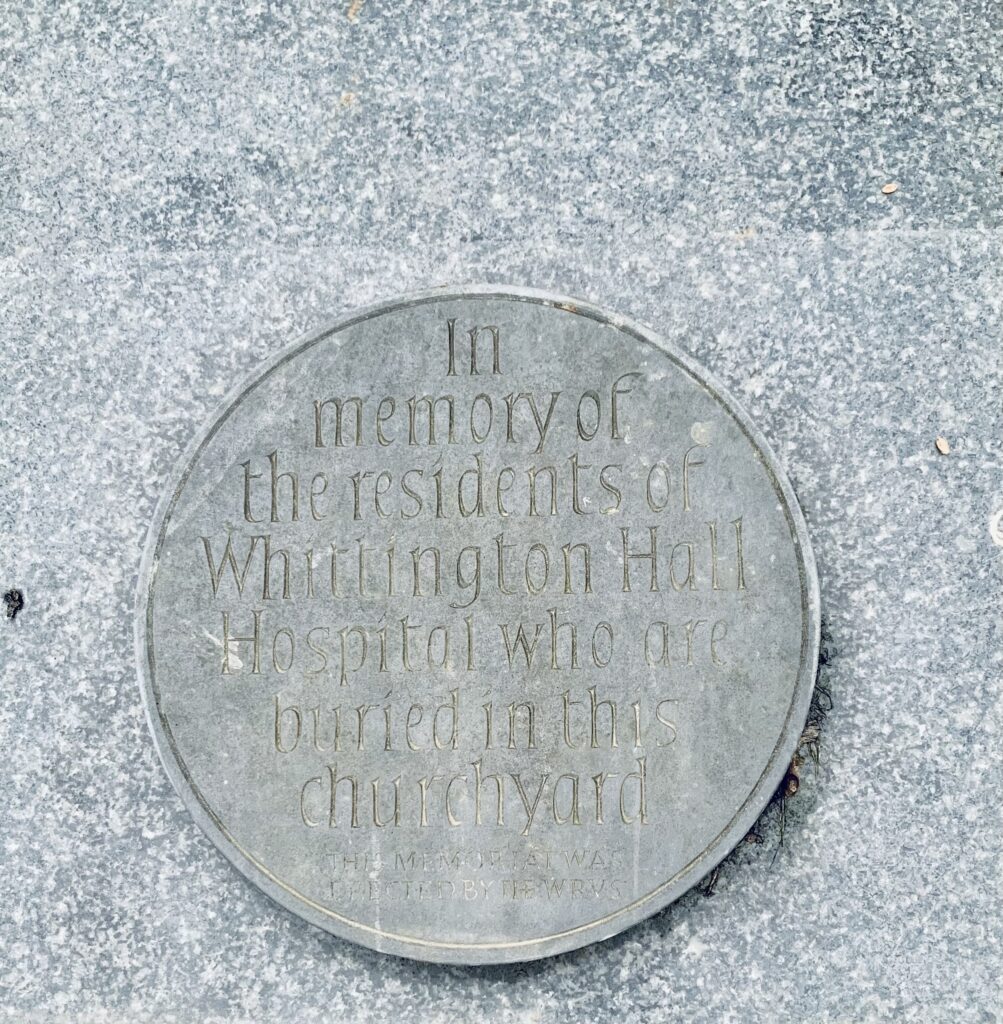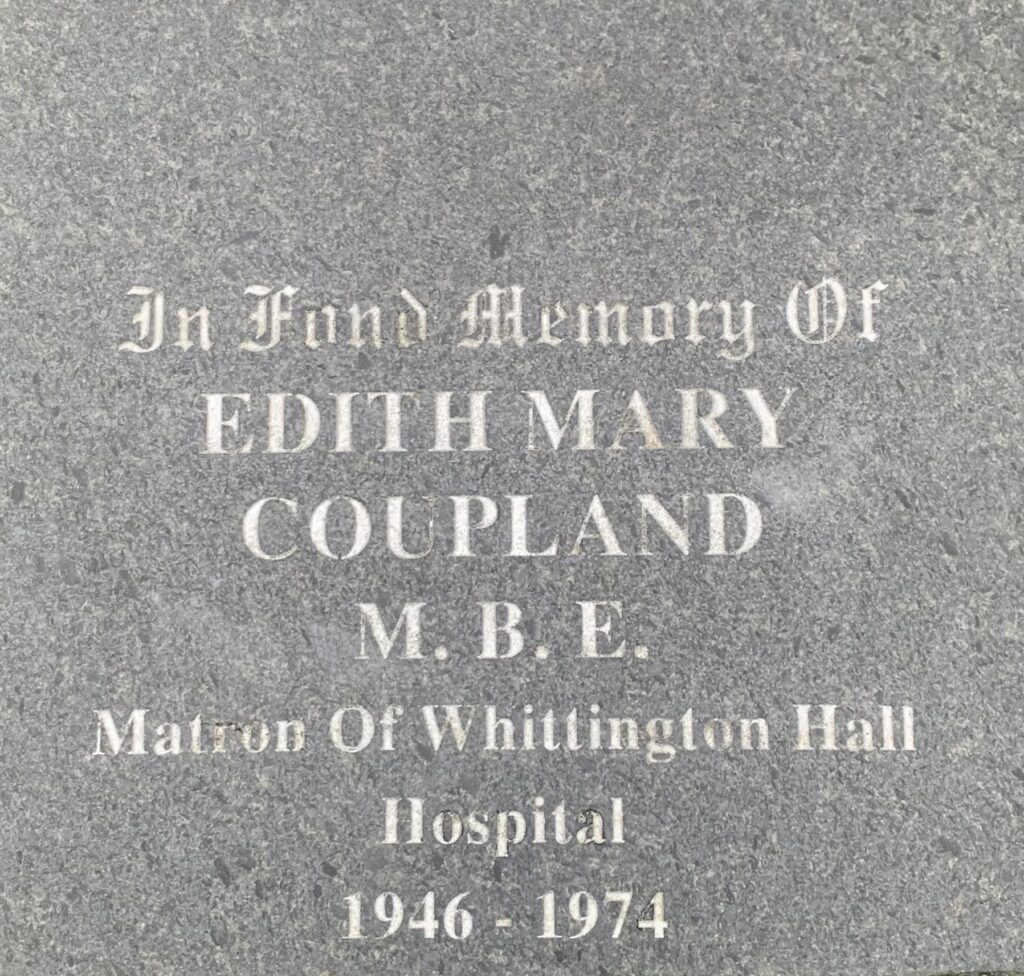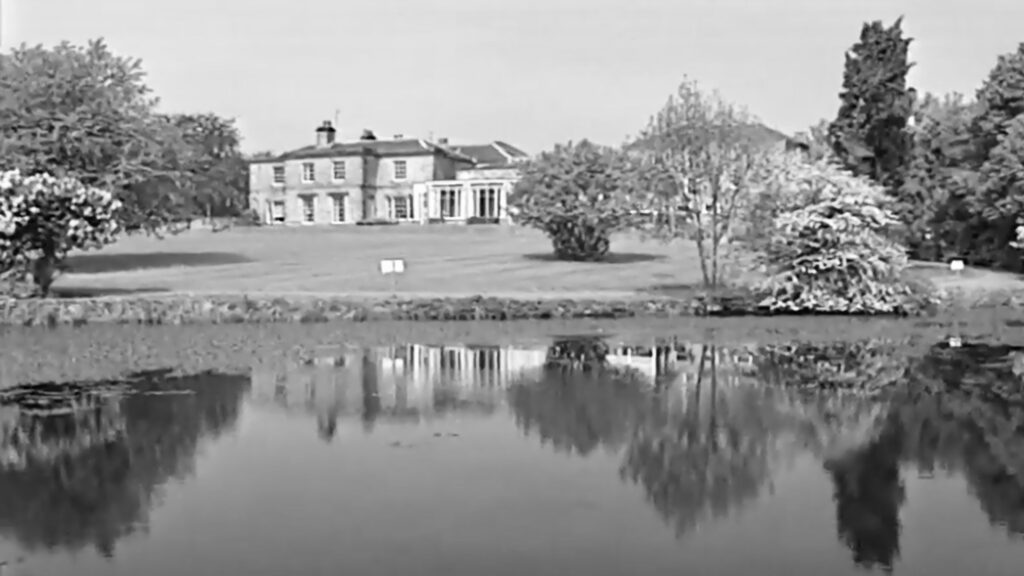
The origins of Whittington Hall are tied in very much alongside our pages about the Dixon family and the Glasshouse.
The Hall is said to have been built by Henry Dixon. Henry arrived in Whittington around 1829/30. Henry was the heir to John Dixon’s estate. John, who at the time of his death in 1816 is said to have owned two thirds of the land in Old Whittington, had no natural heirs. He left his estate to Henry who was the son of his brother’s stepson and had the family name Offerton until they changed it to Dixon.
No money was spared in building the Hall. It boasted a boating lake, a fishing pond, a head gardener’s cottage, an entrance lodge and a gamekeeper’s cottage (Henry was known to host pheasant shoots) in all the estate covered 25 acres.

Whether the upkeep got too much we don’t know but around 1843 the whole of the ‘Whittington Estate’ then covering about 450 acres was put up for sale and was bought in 1884 by William Parker Esq. for £19,000.
Henry was listed as still living in the Hall in the 1851 census along with his wife Caroline and daughter Emily
Nine years later it was broken up and sold in lots, Lot 1 being ‘The Mansion known as Whittington Hall’ – More detailed information about hall and a full listing for this Lot can be seen in ‘History of Whittington Glasshouse and Whittington Hall’ by Trevor Nurse and Tom Bates’s book ‘A History of Old Whittington’.
The Lot was sold to Colonel J Morton Clayton for £3,500. However he only stayed 9 years.
The Hall was leased in 1902 to the Rev Harold Nelson Burden of Clevedon Hall in Somerset for a period of 21 years. In the first instance the Rev Burden registered the Hall as an Institution for an Inebriate Reformatory with the Home Office in 1902. It was certified to house 50.
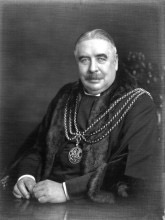
In 1912 its license was changed to a Home for the care of the feeble minded. It was certified under the Board of Control in 1914.
In the early days the Home received both sexes but ultimately it was decided to work with just female patients. Originally the Home was able to accommodate 50 patients however by the 1920’s the accommodation had been extended and now housed four hundred, including staff.
According to the Rev. Crompton in his ‘A History of Whittington Parish’
“Few Institutions in the Country are better managed and controlled. The Inmates have everything done to make them as comfortable as possible. They have a separate Chapel provided for services, twice every Sunday with a service midweek taken for the lowest grade, by the Rector of the Parish.
All the Inmates are found useful occupations, so far as their mental abilities will allow. An Industries School is provided, where the girls are taught needlework, raffia work, sewing, &c. There is also a weaving room, where splendid carpets are woven for the Institutions. Handicraft, domesticity, gardening, cooking, &c., are also taught.”
The positive comments about the home were down very much to the work of the Rev. Burden and his first wife and the ability of the Matron Miss Smith to carry out their ideas.
The work of the of the Rev Burden and his wife Catherine (Kate) (nee Garton) according to an article in the Journal of the Royal Society of Medicine (vol.89 April 1996 by Peter K Carpenter MRCPsych.)
“.. occurred during a period of change. The end of the nineteenth century and period before the First World War marked the culmination of the Temperance movement, with a series of Acts enabling retreats for the treatment of habitual drunkards, or inebriates, then compulsory treatment of convicted inebriates in reformatories. This movement culminated in the 1908 Licencing Bill which was thrown out by the House of Lords. This same period saw the development of concern about ‘mental defectives’, marked by the Idiots Act of 1886, the growth of the eugenics movement, and concern for the permanent care of the ‘feeble-minded’ that followed the 1899 Education Act. This resulted in a Royal Commission in 1904, that in turn in 1913 led to the Mental Deficiency Act and concurrently the enforced growth of special schools”
After graduating in 1895 the Burdens moved to Bristol where Harold took up the vacancy of clerical secretary to the local branch of the Church of England Temperance Society (CETS). At the time those being convicted for drunkenness could before a magistrate voluntarily offer to go for help in a licensed institution. However Harold noted there was no such institution for women. Carpenter notes
“The resultant Women’s Shelter Home, quickly renamed The Royal Victoria Home for Women (RVH), was situated outside the gates of Bristol Prison and, bizarrely, backed on to a public house. It served several purposes, housing convicted or discharged female prisoners as well as being licensed as a retreat for 10 women. It also contained a house for the Burdens as Kate was the Honorary Lady Superintendent. Soon afterwards Harold became its Warden. This home remained the Bristol address of the Burdens for the
next 18 years.
The Home prospered as a retreat and was enlarged twice, but its future was overshadowed by the 1898 Inebriates Act. This Act enabled the compulsory detention of convicted drunkards in inebriate reformatories. The physical specifications for these reformatories were more demanding than the previous retreats, and the Act was cxepcted to generate a great need for new accommodation for inebriates. In 1898 Mr Burden advertised his proposal to establish an inebriate reformatory in Bristol and soon afterwards, in partnership with Edward Thomas who had been involved in setting up the RVH, purchased Brentry Villa.”
The Burdens expanded the Home at Brentry but funding became an issue and the authorities looked to close the Home and the Burdens asked to leave. It was at this time that the Burden’s led the creation of the National Institutions for Inebriates (NII). Carpenter –
“During 1902 the NIl acquired three properties: The RVH was purchased before auction, presumably using the money Harold had just inherited following the death of his mother, and was licensed as a pre-discharge home for 20 inebriate women. Whittington Hall, Chesterfield, was leased and licensed as the Midland Counties Reformatory for 57 women on the 1 October and the redundant Lewes workhouse in Sussex was leased and licensed for 120 women as the Southern Counties Reformatory on 19 November 1902.”
“The ability of Harold and Kate Burden to provide accommodation is remarkable. Between 1902 and 1904 they set up over 450 places for inebriates, with a further 200 set up earlier at Brentry. By 1907 they controlled 617 licensed places under the NIl, with Brentry licensed for 240. In 1907 the NIl and Brentry together held 60% of all inebriates in reformatories in England and Wales. Their reformatories received glowing reports in the Inspector’s annual reports yet were all by far the cheapest in the country to create and to run11. They operated as a single unit from a central administrative office in London, with women being admitted from the courts to Lewes and East Harling, and if they progressed, being moved to Ackworth, and then prior to discharge to either the rural Whittington or the urban RVH. Men could be sent either to East Harling, or to Brentry. The feeble-minded, epileptic and infirm could be accommodated at East Harling.”
In 1908/9 things changed and Magistrates stopped working with reformatories and the closure of centres began with Whittington discharging all its inebriates by the end of 1913
The next chapter in the story according to Carpenter
The Burdens changed the use of all their old reformatories to caring for the mentally defective. In 1911 the RVH and Ackworth were reopened for the mentally defective and East Harling started taking feeble-minded boys alongside inebriates: Whittington Hall reopened in October 1912, when Ackworth finally closed. In 1916 even Brentry pragmatically made arrangements to change its use to admit men with mental deficiency.
The Burdens’ change to care for the mentally defective was formally recognized in 1913 when they set up a trust to own the freeholds and leases of the properties where they were working, and called it the National Institutions for Persons Requiring Care and Control (NIPRCC). In 1914 they then set up the Incorporation of National Institutions for Persons Requiring Care and Control (Inc-NIPRCC) as a limited company running the institutions and paying rent to the NIPRCC.
This split stood the NIPRCC in good stead when the National Health Service came into force, as this split forced the Minister of Health formally to purchase the properties from the trustees
Whittington Hall was enlarged in 1912 and held 370 women by 1916.
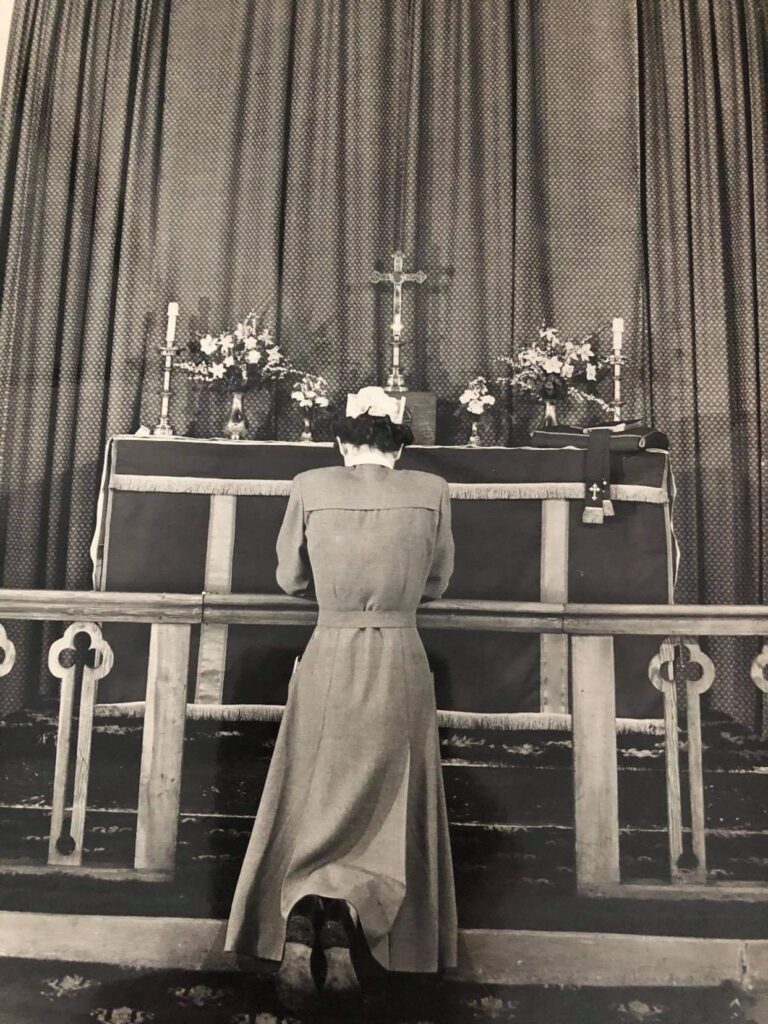
This explains the origin of the photographs
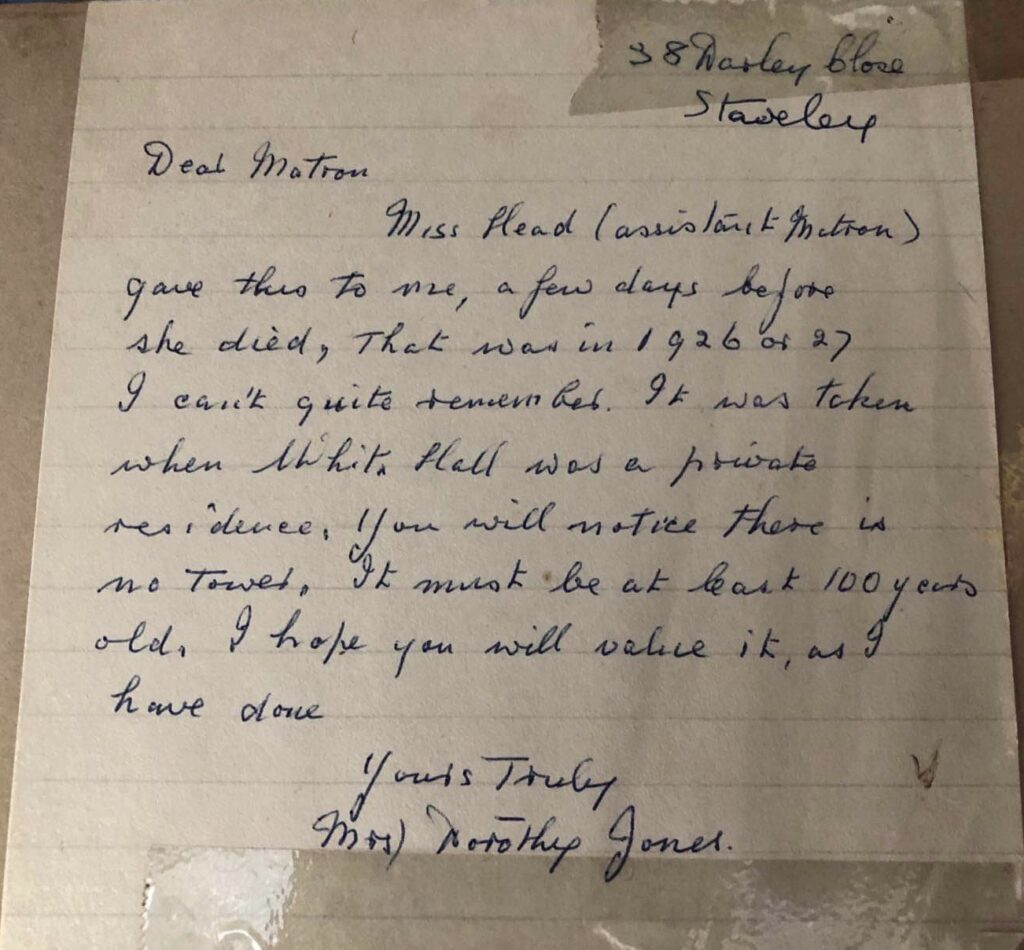
Regrettably Catherine Burden died on the 25th October 1919 following a stroke. Harold went on to marry Rosa Williams
Carpenter reports –
In his final 4 years of life, Mr Burden created a private limited company, Great Stoke Estates Limited, and transferred his land to it. This company then proceeded to buy all the freeholds of the institutions still occupied under lease and many nearby farms, amounting to almost 3 square miles of land around Bristol and Chesterfield. Some of this land and the institutions were later sold to the NIPRCC after his death, when the company was dissolved.
Harold Burden died on the 15 May 1930 from heart disease.
Unusually, the Board of Control inserted a note in their annual report
… with much regret we have to record the death … of the Rev. Harold Nelson Burden . . . he served on the Royal Commission on the Control of the Feeble-minded, his experience and knowledge proving of great value to the enquiry . . . The institutions under his control . . . were among the first to provide certified accommoda- tion for the mentally defective, and proved of great assistance at a time when the supply of beds was extremely limited. In the conduct of these institutions his administrative abilities were invaluable; and we feel that, as a pioneer in this sphere of work, a debt of gratitude is due to him. We wish to record our sincere appreciation of the valuable help he rendered in advancing the working of the Act
According to the Rev Crompton Harold had been a Freeman of the City of London and a liveryman of no fewer than seven city companies, including the Barber Surgeons of which he had been Master. He was one of the “Knights of the Round Table,” a Fellow of the Royal Society of Literature and the Royal Empire Society.
The full article in the Journal of the Royal Society of Medicine (vol.89 April 1996 by Peter K Carpenter MRCPsych.) can be accessed here
The Home continued as a Voluntary Organisation treating women with mental issues until 1948 when in the advent of the NHS it became under the control of the Regional Hospital Board with Sheffield as its Administrative Authority.
In 1974 it became under the control of the Trent Regional Health Authority and North Derbyshire District Health Authority.
The Hall continued to be operational until the late 1990’s when it was put up for sale and was purchased by a development company who turned into luxury apartments.
There is a memorial to a long term matron and to all the past patients of the Hospital in the Churchyard at the East End of the Church.
